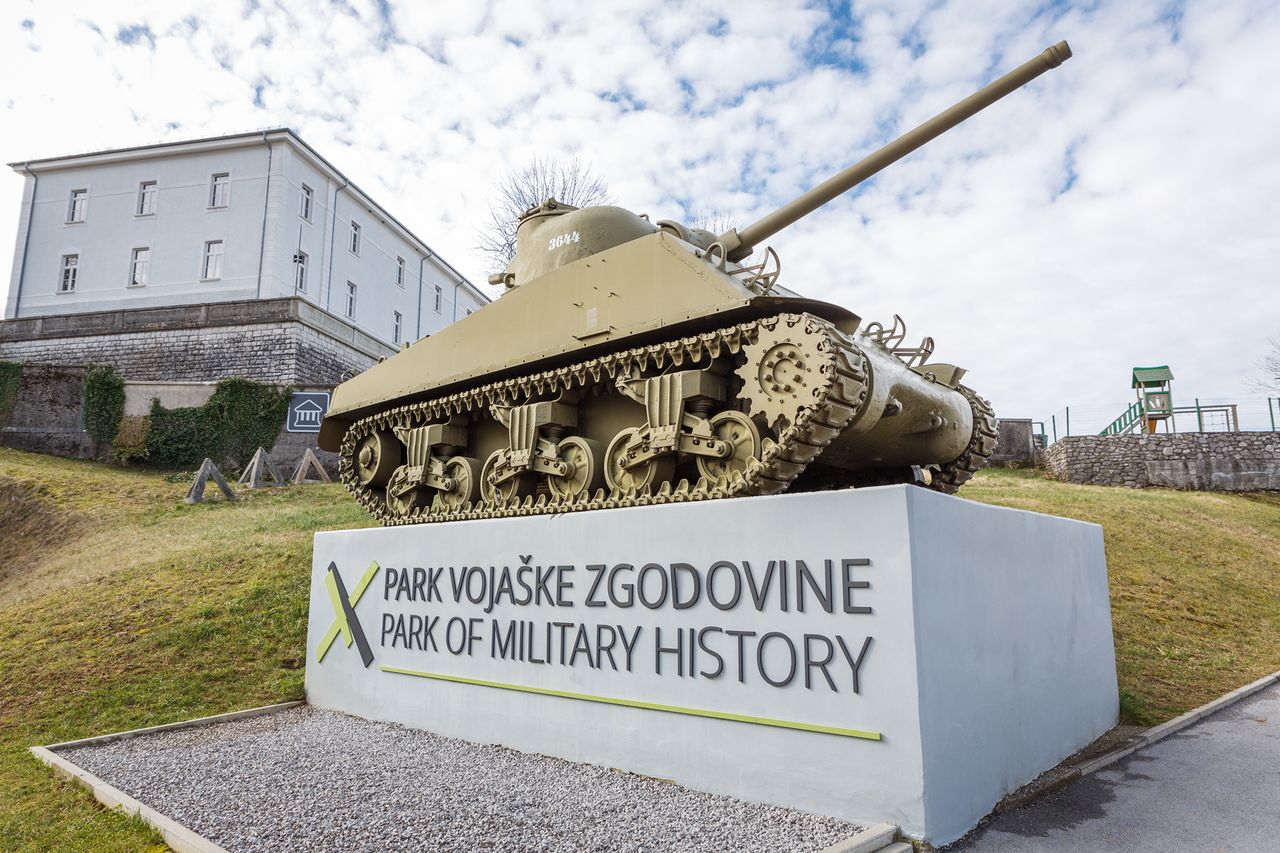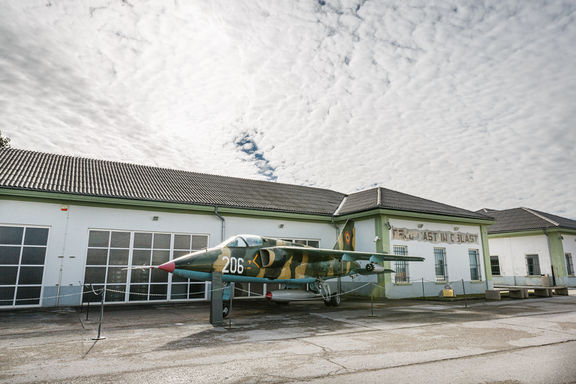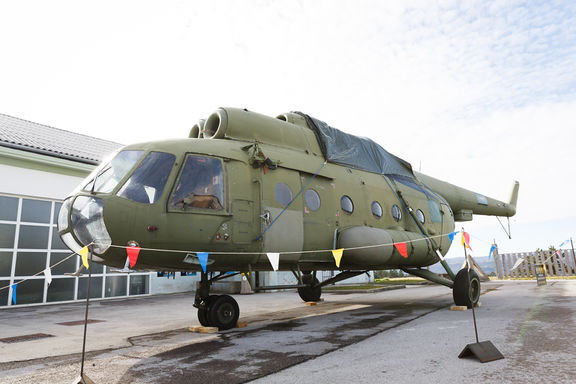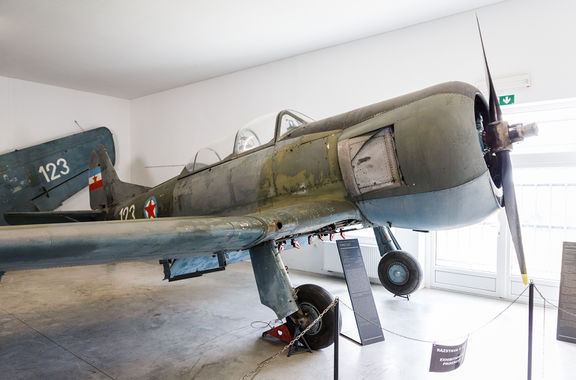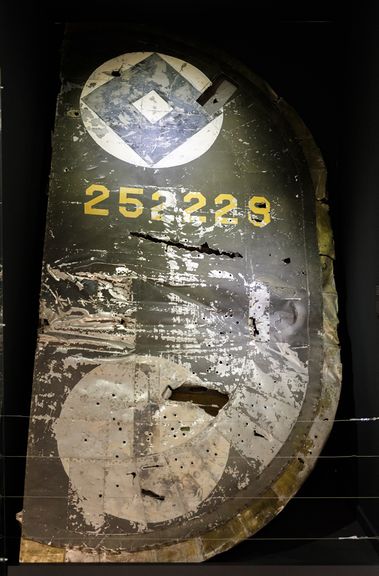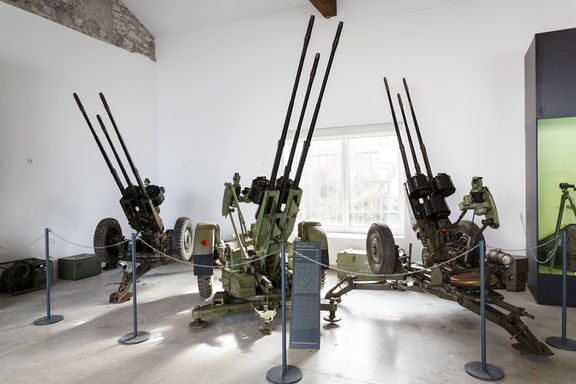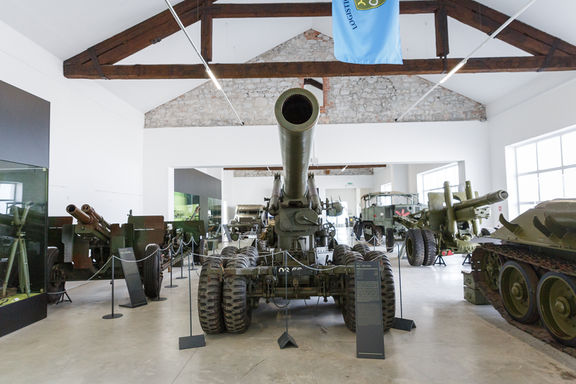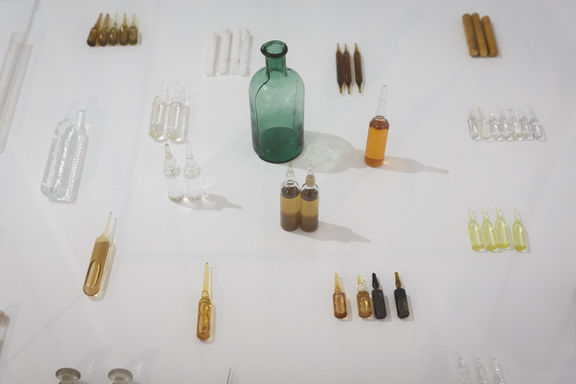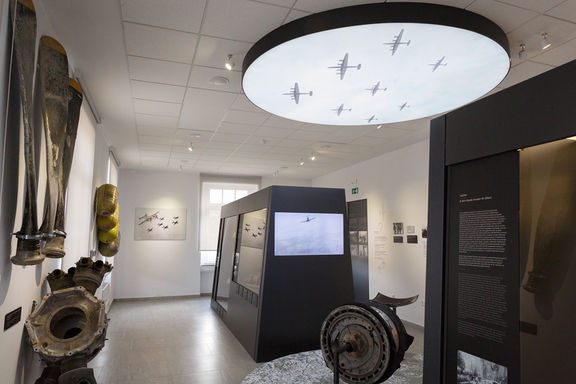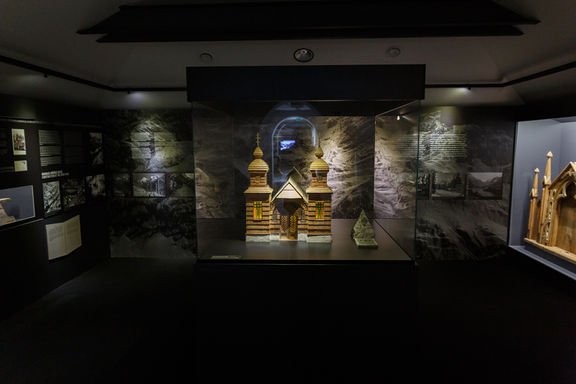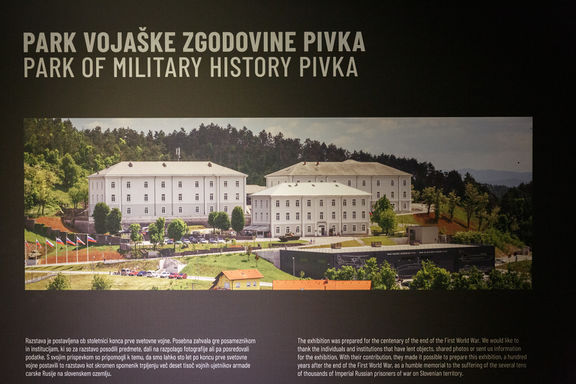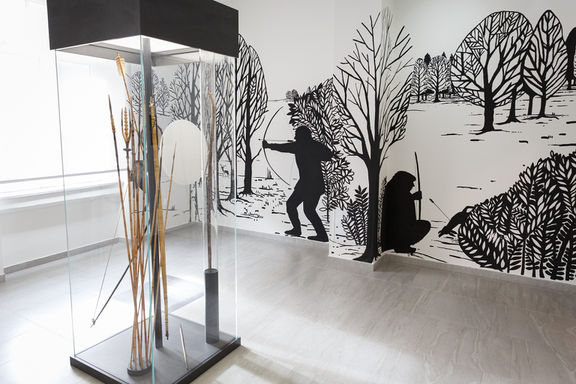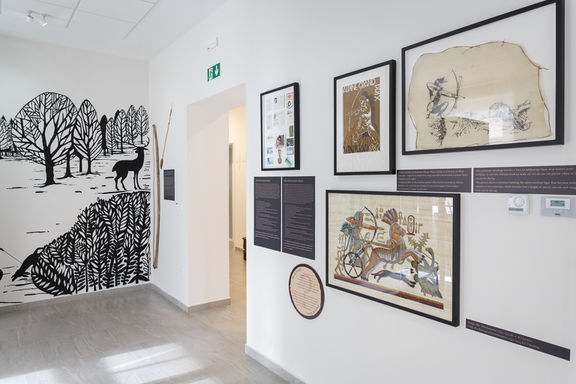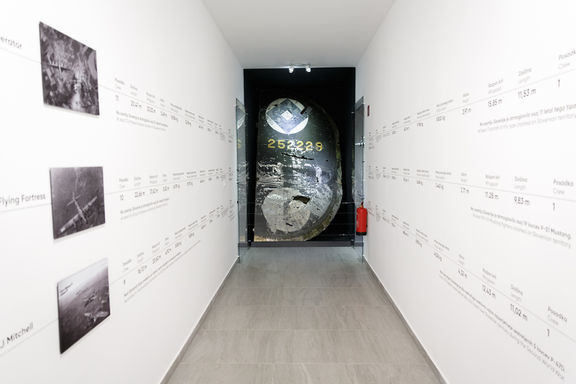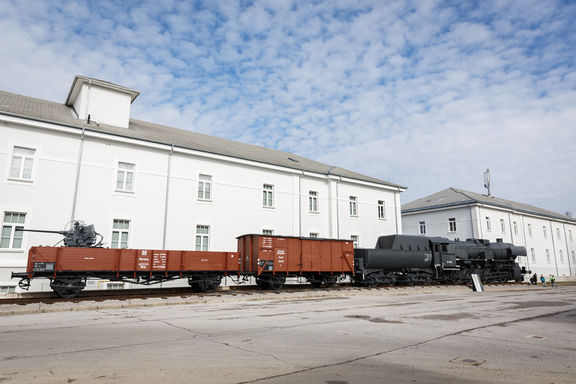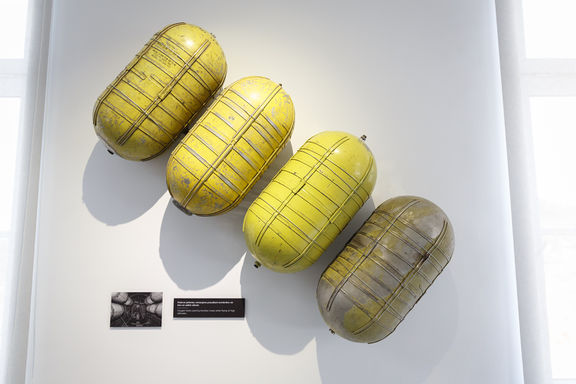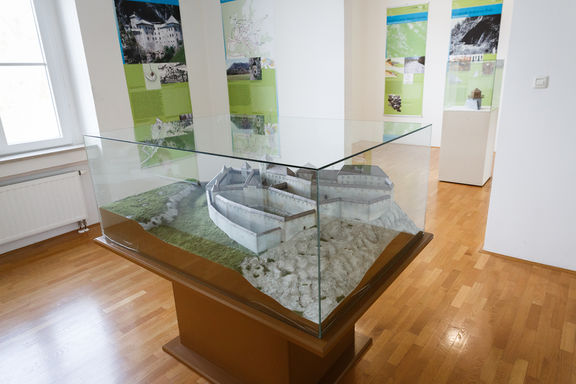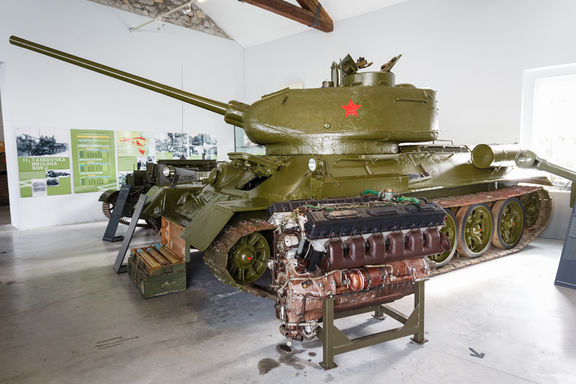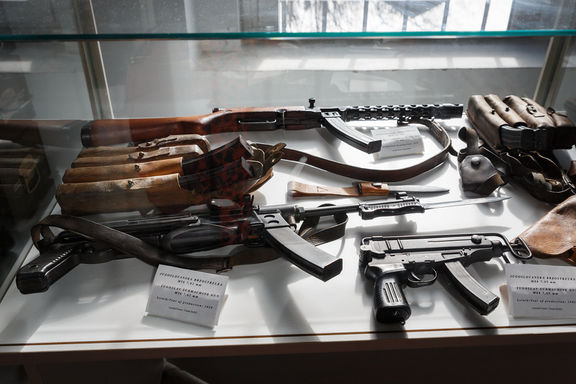Difference between revisions of "Park of Military History Pivka"
Anže Zorman (talk | contribs) |
(added info on open depots of the 3 national museums) |
||
| (11 intermediate revisions by 6 users not shown) | |||
| Line 1: | Line 1: | ||
{{Article | {{Article | ||
| − | | status = | + | | status = NIFERTIK! |
| maintainer = Anže Zorman | | maintainer = Anže Zorman | ||
}} | }} | ||
| Line 8: | Line 8: | ||
| street = Kolodvorska 51 | | street = Kolodvorska 51 | ||
| town = SI-6257 Pivka | | town = SI-6257 Pivka | ||
| − | | telephone = | + | | map = http://www.openstreetmap.org/?lon=14.1886&lat=45.6699&zoom=14&layer=mapnik |
| − | | email = | + | | telephone = 386 (0) 31 775 002 |
| + | | email = info@parkvojaskezgodovine.si | ||
| website = http://www.parkvojaskezgodovine.si | | website = http://www.parkvojaskezgodovine.si | ||
| founded by = Ministry of Defence | | founded by = Ministry of Defence | ||
| Line 17: | Line 18: | ||
| role = Head | | role = Head | ||
| telephone = | | telephone = | ||
| + | | email = janko.bostjancic@turizem-pivka.si | ||
}} | }} | ||
| + | |accounts = | ||
| + | https://twitter.com/pvz_pivka | ||
| + | https://www.facebook.com/parkvojaskezgodovine/?ref=br_rs | ||
| + | https://www.instagram.com/parkvojaskezgodovine/ | ||
| + | https://www.youtube.com/channel/UCYzz0BwnsGzkfsogc9I54_Q | ||
| + | https://www.tripadvisor.com/Attraction_Review-g1887828-d4788028-Reviews-Park_vojaske_zgodovine_Pivka-Pivka_Inner_Carniola_Region.html | ||
}} | }} | ||
{{Teaser| | {{Teaser| | ||
| − | The [[Park of Military History Pivka]] holds one of the biggest and possibly most diverse military history collections in this part of Europe. It was established in [[established::2006]], when the first so-called pavilion was opened on the grounds of abandoned Italian (and later Yugoslavian) army barracks in the town of Pivka, which is also the main initiator of the project. The park deals with military history of Slovenia and also of the region around Pivka, as well as with the wider military related technical and political heritage of Europe. | + | {{Wide image|Park of Military History Pivka 2020 Exterior Photo Kaja Brezocnik (2).jpg}} |
| + | The [[Park of Military History Pivka]] holds one of the biggest and possibly most diverse military history collections in this part of Europe. It was established in [[established::2006]], when the first so-called pavilion was opened on the grounds of the abandoned Italian (and later Yugoslavian) army barracks in the town of Pivka, which is also the main initiator of the project. The park deals with the military history of Slovenia and also of the region around Pivka, as well as with the wider military related technical and political heritage of Europe. | ||
| − | Today | + | Today the park represents the biggest museum complex in Slovenia, it has grown and developed gradually by renovating and occupying the barracks. As of 2015, there are four main exhibition spaces, a courtyard and even a historical trail in the surrounding area. The park hosts various lectures and educational events, organises an annual festival and presents other occasional events. Since 2017 one of the buildings in the complex has featured as the Open Depots exhibition of the three national museums - [[National Museum of Slovenia]], [[Technical Museum of Slovenia]], and [[National Museum of Contemporary History]]. |
}} | }} | ||
{{YouTube|-4P8iYu1PfQ}} | {{YouTube|-4P8iYu1PfQ}} | ||
| − | The | + | The park has been set up in close cooperation among the Municipality of Pivka, the Ministry of Defence, the curatorial department of the [[Military Museum of Slovenian Armed Forces]] and a number of enthusiasts and collectors from the area who contributed greatly both in terms of artefacts as well as knowledge. |
==Artefacts and exhibitions== | ==Artefacts and exhibitions== | ||
| − | The former barracks headquarters building is nowadays again serving a similar function with office spaces, a multimedia room, a museum shop and the Pivka Canteen, a | + | The former barracks headquarters building is nowadays again serving a similar function with office spaces, a multimedia room, a museum shop and the Pivka Canteen, a canteen that offers an army-like ambient and the food to match (groups can even order dinners in the caverns based on menus from World War I). It also houses the exhibition called ''Regio Carsica Militaris'', presenting the historical trajectories that have touched the area around Pivka since the Roman times onwards, with the occupying and transient armies leaving, among other things, a trail of forts and barricades. |
| − | An array of the bigger and more imposing artefacts is housed in the three big pavilions, with the newest one | + | An array of the bigger and more imposing artefacts is housed in the three big pavilions, with the newest one dedicated foremost to the Slovenian War of Independence and its historical context. Also on display are the equipment of the Slovenian Territorial Defence forces, the infamous Gazelle helicopter (associated with a very curious chapter of the war), tanks and other vehicles from the old Yugoslavian army, etc. Accompanied by additional explanatory materials, together they form the most comprehensive exhibition of this kind in Slovenia. |
| − | Other pieces include aeroplanes from around the world (among them the American F-86 Sabre and Yugoslavian SOKO 522), a Yugoslavian submarine P-9, quite a few tanks and an array of heavy artillery (like the famous German cannon Flak 88 and the American Long Tom 155mm cannon, both used during | + | Other pieces include aeroplanes from around the world (among them the American F-86 Sabre and Yugoslavian SOKO 522), a Yugoslavian submarine P-9, quite a few tanks and an array of heavy artillery (like the famous German cannon Flak 88 and the American Long Tom 155mm cannon, both used during World War II). These pieces are presented not only as part of the industrial and technical heritage but are also accompanied by objects that offer a more personal historical perspective. |
===Historical trails=== | ===Historical trails=== | ||
| − | The park also established two historical trails in the | + | The park has also established two historical trails in the vicinity. The trails connect the old barracks in Pivka with an abandoned military polygon, an underground fort built by the Italians in the 1930s and its accompanying underground tunnels and other relevant points of interest. |
==Festival of military history== | ==Festival of military history== | ||
| − | + | Like the park, the annual festival of military history began in 2006. It has taken different forms, but its main components are still battle re-enactments, usually based on important historical moments. For example, to commemorate the 70th anniversary of the end of World War II in 2015, the battle for Berlin between the Red Army and the German Army was re-enacted. | |
| − | The festival also features lectures, additional exhibitions, flea market of military artefacts, | + | The festival also features lectures, additional exhibitions, a flea market of military artefacts, children's workshops and other events. |
== See also == | == See also == | ||
| Line 53: | Line 62: | ||
== External links == | == External links == | ||
*[http://www.parkvojaskezgodovine.si Park of Military History Pivka website] | *[http://www.parkvojaskezgodovine.si Park of Military History Pivka website] | ||
| + | |||
| + | {{gallery}} | ||
[[Category:Museums]] | [[Category:Museums]] | ||
| + | [[Category:Venues]] | ||
[[Category:Specialised museums]] | [[Category:Specialised museums]] | ||
[[Category:World War I]] | [[Category:World War I]] | ||
[[Category:World War II]] | [[Category:World War II]] | ||
| + | [[Category:Roman archaeological findings]] | ||
Latest revision as of 07:45, 17 October 2020
The park has been set up in close cooperation among the Municipality of Pivka, the Ministry of Defence, the curatorial department of the Military Museum of Slovenian Armed Forces and a number of enthusiasts and collectors from the area who contributed greatly both in terms of artefacts as well as knowledge.
Artefacts and exhibitions
The former barracks headquarters building is nowadays again serving a similar function with office spaces, a multimedia room, a museum shop and the Pivka Canteen, a canteen that offers an army-like ambient and the food to match (groups can even order dinners in the caverns based on menus from World War I). It also houses the exhibition called Regio Carsica Militaris, presenting the historical trajectories that have touched the area around Pivka since the Roman times onwards, with the occupying and transient armies leaving, among other things, a trail of forts and barricades.
An array of the bigger and more imposing artefacts is housed in the three big pavilions, with the newest one dedicated foremost to the Slovenian War of Independence and its historical context. Also on display are the equipment of the Slovenian Territorial Defence forces, the infamous Gazelle helicopter (associated with a very curious chapter of the war), tanks and other vehicles from the old Yugoslavian army, etc. Accompanied by additional explanatory materials, together they form the most comprehensive exhibition of this kind in Slovenia.
Other pieces include aeroplanes from around the world (among them the American F-86 Sabre and Yugoslavian SOKO 522), a Yugoslavian submarine P-9, quite a few tanks and an array of heavy artillery (like the famous German cannon Flak 88 and the American Long Tom 155mm cannon, both used during World War II). These pieces are presented not only as part of the industrial and technical heritage but are also accompanied by objects that offer a more personal historical perspective.
Historical trails
The park has also established two historical trails in the vicinity. The trails connect the old barracks in Pivka with an abandoned military polygon, an underground fort built by the Italians in the 1930s and its accompanying underground tunnels and other relevant points of interest.
Festival of military history
Like the park, the annual festival of military history began in 2006. It has taken different forms, but its main components are still battle re-enactments, usually based on important historical moments. For example, to commemorate the 70th anniversary of the end of World War II in 2015, the battle for Berlin between the Red Army and the German Army was re-enacted.
The festival also features lectures, additional exhibitions, a flea market of military artefacts, children's workshops and other events.



